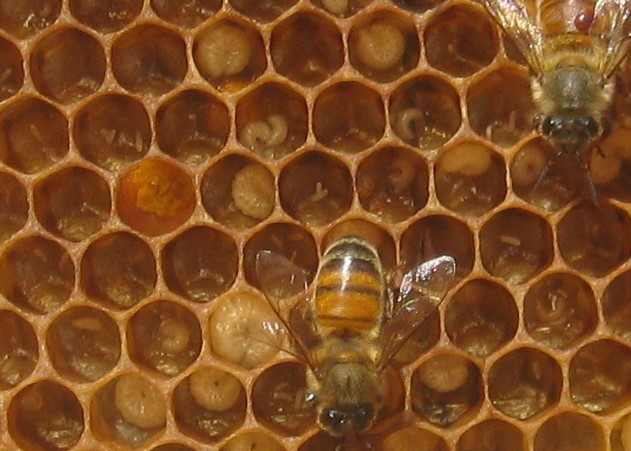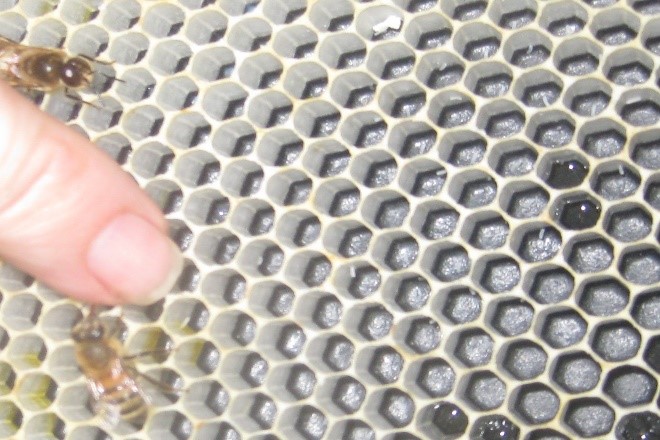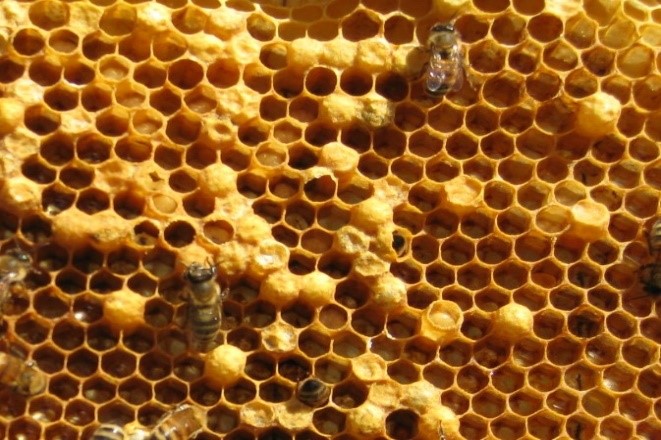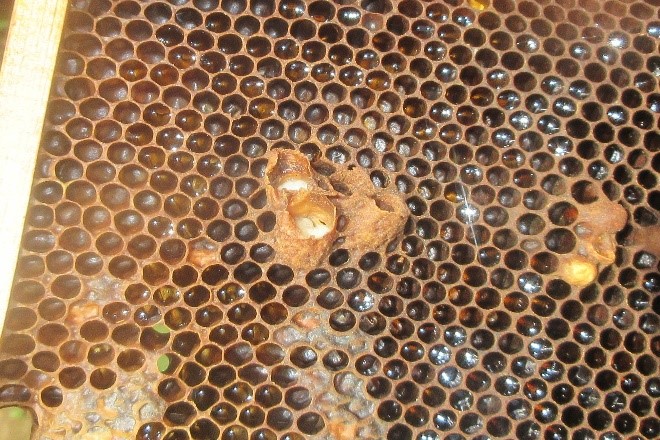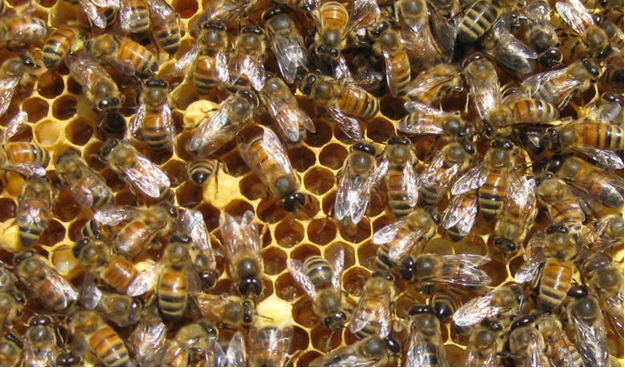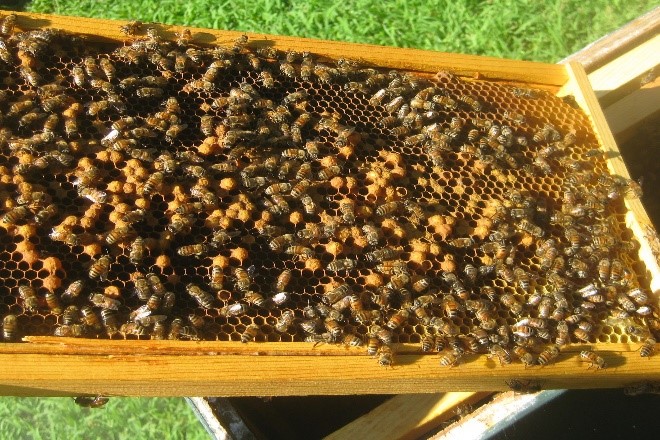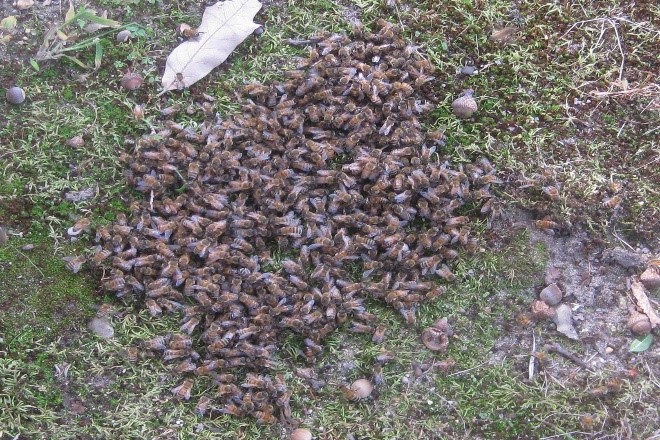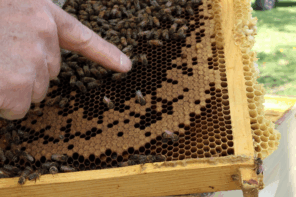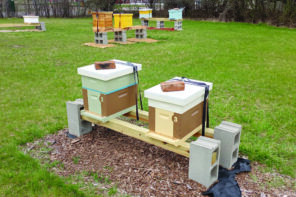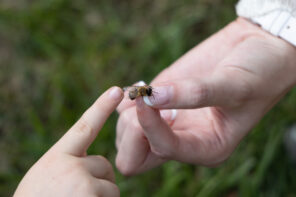Greg Carey
If you keep bees, sooner or later you will encounter a laying worker situation. For me it was in my second Spring. The queen died in late February, and the bees couldn’t requeen themselves, and by the time I realized there was a problem they had developed into a colony with laying workers. How does this happen? How can I recognize it? What are the consequences of laying workers? What can be done once it has happened?
How does this happen? All worker bees, being female, have ovaries which are normally not developed and functional. However, some workers are genetically predisposed to develop functional ovaries under the right conditions. These are usually young nurse bees in a colony with little to no open worker brood pheromone and the absence of queen pheromone. Within a week or so of these conditions these young bees’ ovaries will start to mature and produce eggs. Yes, I said bees. It’s possible and even likely that more than one worker will start to lay. The laying worker is not like a queen where there is only one (there are many).
You will recognize that you have laying workers when you can’t find your queen and start to see multiple eggs being placed in the cells. The multiple eggs may also result from a new queen just starting to lay, but the giveaway is that with laying workers some of the eggs will not be on the bottom of the cell but stuck to the cell walls due to the shortness of the workers’ abdomens.
The sure-fire sign will be after nine days you start to see capped drones in worker size cells. This is because the laying workers do not go on mating flights and can only lay unfertilized (drone) eggs. You will notice that the brood pattern is also very spotty. That’s due to other workers not recognizing the worker eggs and removing them before they hatch. A drone laying queen can have a genuinely nice drone pattern.
The obvious consequence of a colony that’s only producing drones is that it will die within two months when the worker population drops below the survival threshold. The colony will act as though it is queen right and will not develop a queen from a mixed brood frame and will even tear down queen cells that are given it on a frame. The beek will usually try all these things to attempt to salvage the colony. They will get all google eyed searching and reading all the successful adventures of other beeks on that inter-web thingy.
Meanwhile those drones are starting to emerge and flood the hive and neighborhood with small, inferior drones that carry the genetic disposition for laying workers. There goes the gene pool! And, in the end, your colony dies. It’s time to cut your losses and free up the equipment for new occupants.
Here’s what you can do. It’s what I do every time, and it works 100%. Take those frames of brood from laying workers and put them into the freezer. Leave them there until you’re confident that the one with that ice age gene has succumbed. Next, and this is crucial, dump all the bees on the ground a good distance from your strong hives and store the equipment until you are ready to do another split. The dumped bees will join up with your other colonies or be killed if not accepted. By the time you read this it will most likely be too late to be starting another colony, but earlier in the season this saves you much time and resources. Just clean that equipment and store it, ready for the next split, swarm, or buy.






